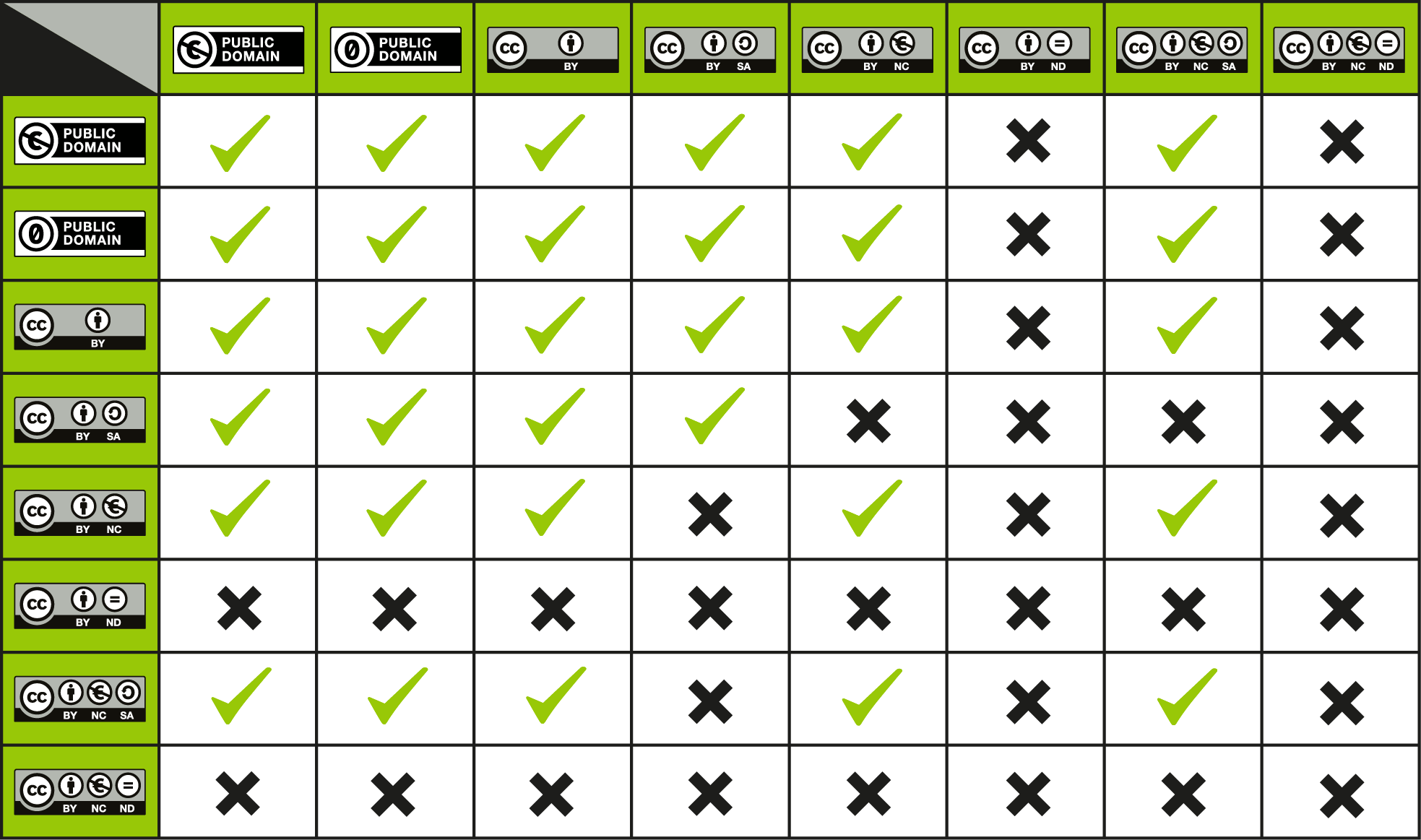
Creative Commons FAQ: Can I combine material under different Creative Commons licenses in my work?

While the Creative Commons licences indicate what is permissible there are really only three different ways to use OER. These techniques are often referred to as ‘Reuse’, ‘Revise’, or ‘Remix’.
The first option is to reuse the resource with no changes, ‘as-is’. If an OER fits all the evaluation criteria identified, then it can be deployed directly into the learning environment with no changes. The only requirement is to attribute the source as required by the open licence. Typically, many openly licensed video resources fall into this category.
Often, there is a need to adjust an OER to align it better to the new learning environment. Examples include the need to rework language so that it can be understood by local learners, replacement of case studies with ones that refer to contexts closer to home and the swopping out of images and photos with local examples. The OER might also have to be translated into a different language. Besides revisions, the OER might benefit from enhancements such as the addition of questions, interactivity, opportunities for peer discussions, and so on.
If making these revisions is to be allowed, the licence needs to permit repurposing. Does it allow adaptation? For example, if it is a Creative Commons licence, does it include ‘No Derivatives’ (ND) as a reserved right? If so, then repurposing is not permitted. Many OER do encourage revisions, but it is important to review your OER selection and make sure that permission is granted.
The process of assembling a number of OER into a completely new learning resource is called remixing. This actually makes great sense because, by remixing, it is possible to use the best parts of multiple OERs. Look at the structure of these course materials that you are currently reading, for example, where multiple resources have been adapted and integrated into a new product.
In terms of licensing, however, you do need to be judicious when combining OER. Not all combinations of rights as stipulated by an open licence allow any or all OER to be mixed. Only certain combinations work. For example, any licence with Share Alike as a reserved right excludes mixing with other licenses that are not identical in nature, with only a few exceptions. No Derivatives, too, excludes any type of remixing as preservation of the original is paramount.
The chart below shows which CC-licensed material can be remixed. To use the chart, find a license on the left column and on the top right row. If there is a check mark in the box where that row and column intersect, then the works can be remixed. If there is an “X” in the box, then the works may not be remixed unless an exception or limitation applies.

Creative Commons FAQ: Can I combine material under different Creative Commons licenses in my work?
If you make adaptations of material under a CC license (i.e. “remix”), the original CC license always applies to the material you are adapting even once adapted. The license you may choose for your own contribution (called your “adapter’s license”) depends on which license applies to the original material. Recipients of the adaptation must comply with both the CC license on the original and your adapter’s license.
When remixing BY or BY-NC material, it is generally recommended that your adapter’s license include at least the same license elements as the license applied to the original material. This eases reuse for downstream users because they are able to satisfy both licenses by complying with the adapter’s license. For example, if you adapt material licensed under BY-NC, your adapter’s license should also contain the NC restriction. See the chart below for more details.
In general, when remixing ShareAlike content, your adapter’s license must be the same license as the license on the material you are adapting. All licenses after version 1.0 also allow you to license your contributions under a later version of the same license, and some also allow ported licenses.
The BY-ND and BY-NC-ND licenses do not permit distribution of adaptations (also known as remixes or derivative works), and prohibits the creation of adaptations under the pre-4.0 versions of those licenses. Since you may not share remixes of these materials at all, there is no compatibility with other licenses. (Note that the ND licenses do allow you to reproduce the material in unmodified form together with other material in a collection.)
The chart below details the CC license(s) you may use as your adapter’s license. When creating an adaptation of material under the license identified in the lefthand column, you may license your contributions to the adaptation under one of the licenses indicated on the top row if the corresponding box is green. CC does not recommend using a license if the corresponding box is yellow, although doing so is technically permitted by the terms of the license. If you do, you should take additional care to mark the adaptation as involving multiple copyrights under different terms so that downstream users are aware of their obligations to comply with the licenses from all rights holders. Dark gray boxes indicate those licenses that you may not use as your adapter’s license.
Encouraging students to use and modify resources
According to OER Africa, "The adaptability and flexibility of Open Educational Resources (OER) allow educators to create engaging lessons. Encouraging students to use and modify these resources can enhance their knowledge retention and encourage social interactions among the peers." Read more HERE.